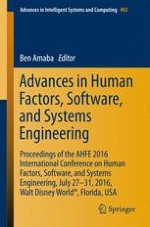This book provides a platform for addressing human factors challenges in software and systems engineering, both pushing the boundaries of current research and responding to new challenges, fostering new research ideas in the process. This book is intended for researchers, professional software and systems engineers, and human factors and human systems integration experts to help them address societal challenges for next-generation systems with applications for meeting them. Topics include evolutionary and complex systems, human systems integration, smart grids and infrastructure, workforce training requirements, systems engineering education, and defense and aerospace. Based on the AHFE 2016 International Conference on Human Factors, Software, and Systems Engineering, held on July 27-31, 2016, in Walt Disney World®, Florida, USA. This book represents an inspiring guide for all researchers and professionals in the field of Human Factors, Software, and Systems Engineering.
